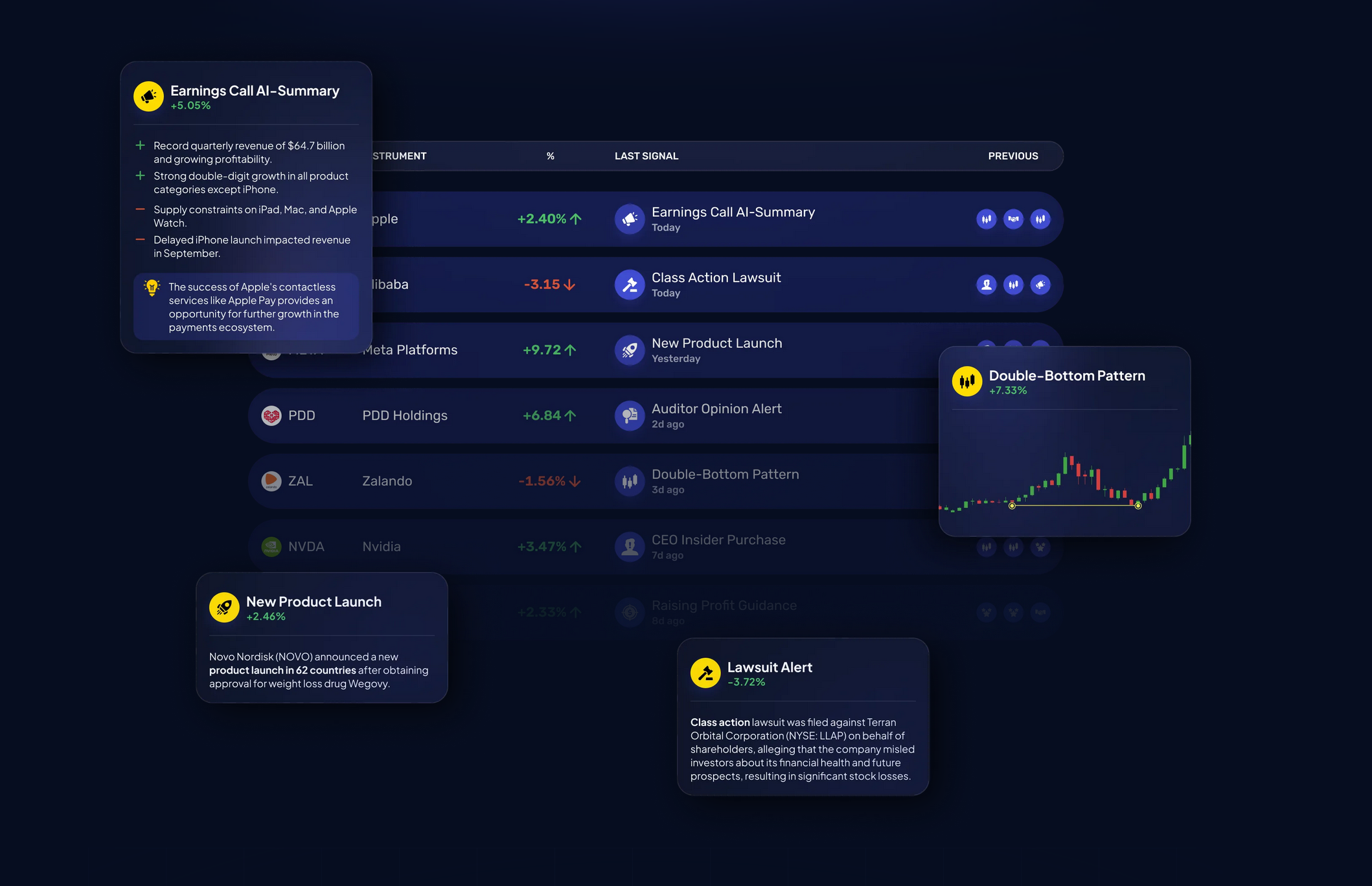20 New Reasons For Selecting AI Stock Trading Platform Sites
20 New Reasons For Selecting AI Stock Trading Platform Sites
Blog Article
Top 10 Tips To Assess The Privacy And Security Of Ai Stock Trading Platforms
Since they handle personal and sensitive financial information, security as well as privacy are of paramount importance when utilizing AI trading platforms that forecast or analyze the prices of stocks. A breach or misused data could result in significant financial losses and reputational damage. These are the top ten tips to help you assess the security and privacy capabilities of these platforms.
1. Check the Data Encryption
Secure transmission of data: Make sure whether the application you're using uses secure protocols to encrypt your data as it is transmitted between their servers and your device (e.g. TLS/SSL).
Secure data encryption at rest: Check the encryption of sensitive information on the server of the platform using a strong encryption standard (e.g. AES-256).
Verify if the platform supports encryption end-to-end of sensitive data or communications.
2. Review Authentication Mechanisms
Two-factor authentication (also known as copyright) is an excellent way to increase security.
Biometric authentication - Look for biometric options for mobile app login (e.g. finger print or facial recognition).
Password policies: Check whether the platform has strict password policies (e.g. minimum length and complexity requirements).
3. Check for Compliance with Regulations
Financial regulations: Ensure conformity with the relevant financial regulations (e.g. SEC FINRA MiFID II).
Data protection laws: Verify compliance with privacy laws (e.g. GDPR, GDPR CCPA) if you are or trade with regions covered by these laws.
Audit certifications: Determine whether your platform was examined by a third-party auditor or certifications.
Review Data Access Controls
Role-based access - Make sure that the platform is equipped with role-based control (RBAC), which limits access to data only for authorized users.
Permission levels: Verify if you can assign granular permissions to different team members or users.
Activity monitoring Check to determine whether your application keeps track of and monitors user's activity.
5. Assess Vulnerability Assessment
Regular updates: Update the software regularly to ensure that it is always current.
Penetration Testing: Check if the platform is routinely put through penetration testing, which identifies and fixes security weaknesses.
Find bug bounty programs. They're designed to motivate external security researchers (such as those at Google) to share vulnerabilities.
6. Evaluate Data Privacy Policies
Transparency. Review the platform's Privacy Policy to learn the types of information being collected and how it is used.
Data reduction: Only collect data that is necessary for the functionality of the platform.
Third-party sharing: Verify whether the platform is sharing data with third parties, and If so the conditions under which it is shared.
7. Secure API usage is important to verify
API security: Make sure the platform's API uses secured authentication methods (e.g., OAuth, API keys) and encrypts data exchanges.
Rate-limiting: Determine if the API has a limit on rate to avoid abuse and brute-force attacks.
Verify whether the platform has recorded API access for monitoring, auditing and reporting.
8. Assess the Recovery of Incidents and Response
Incident response plan - Make sure that the platform is outfitted with a plan of action to handle data breaches or other security incidents.
Notification policies: Verify whether the platform informs users promptly in the case of a security breach.
Backups of data - Make sure the platform has a plan for disaster recovery and regularly backs data up.
9. Check out the security measures for physical security
Security of the data center: Make sure the servers that run your platform are situated in data centers that are equipped with physical security measures, such as access control and surveillance.
Redundancy - Make sure that the platform is armed with redundant systems to guarantee data availability even if hardware fails.
Geographic distribution: To enhance resilience, make sure that the information is spread across several sites.
10. Test Privacy Controls for Users
Data deletion. Make sure you can permanently delete data from the service when you cease using the service.
Privacy settings - Examine to determine if the platform permits users to set privacy settings in order for you to decide which information will be visible or shared.
Anonymization: Determine if data is being used to anonymize to allow machine learning or analytics.
Bonus Tips
Feedback and review of users to evaluate the platform's security and privacy.
Free trial period: Try the platform's privacy controls and security features by using a demo.
Customer Support: Make sure that the platform has the capacity to offer a solid support service in case of security concerns.
By following these tips to evaluate the privacy and security of AI trading platforms that predict or analyze stocks making sure your personal financial and personal information is protected. A secure platform protects your investments and creates trust in its services. See the top rated best ai trading software for website examples including investing ai, ai stock trading, best ai for trading, ai for stock trading, ai for investing, options ai, ai trading, chart ai trading assistant, ai stock, ai for trading and more.
Top 10 Tips For Evaluating The Authenticity Of Trading Platforms Using Artificial Intelligence That Forecast Or Analyze Prices For Stocks
Transparency plays a crucial role in assessing AI-driven trading and platform for stock predictions. Transparency allows users to confirm predictions, be confident in the platform and understand the way it functions. Here are the top 10 suggestions to evaluate the credibility of these platforms:
1. AI Models explained in depth
Tip - Check that the website provides a comprehensive description of the AI and algorithmic models that are used to predict the future.
The reason is that understanding the basic technology helps users assess the reliability of their products.
2. Disclosure of Data Sources
Tips: Ensure that the platform is transparent about the sources of data it relies on.
The reason: Knowing the sources of data will ensure that the platform has accurate and comprehensive information.
3. Performance Metrics, Backtesting and Results
Tips: Make sure you search for transparent reporting on performance metrics such as accuracy rates and ROI, in addition to the results of backtesting.
This will give users to evaluate past performance against the latest platform.
4. Real-time notifications and updates
Tip. Make sure the platform is able to provide live notifications or updates on trades and system changes and also forecasts.
Why: Realtime transparency provides users with constant information about critical actions.
5. Limitations The Open Communication
TIP: Check if your platform explains the risks and limitations of the strategies used to trade and the forecasts it makes.
What's the reason? Recognizing the limitations of a product can build trust, which helps customers make better decisions.
6. Users are able to access raw data
Tip: Determine whether the AI model is able to access raw data, intermediate results or both.
Why: Raw data can be used to validate the predictions of others and to conduct an analysis.
7. Transparency of Fees and Costs
TIP: Ensure that all subscription fees, charges and possible hidden costs are clearly listed on the platform.
Transparent pricing creates trust and helps avoid surprises.
8. Regularly scheduled reporting and audits
Examine whether there are any regular reports from the platform, or if an external auditor is able to verify its operations and their performance.
Why Independent Verification is important: It increases credibility and guarantees accountability.
9. Explanability of Predictions
Tips Check to see whether there is an explanation of how the platform can make specific predictions and recommendations (e.g., feature priority, decision trees).
Why Explainability is a tool that assists users in understanding AI-driven decision-making.
10. User Feedback Channels and Support
Tip: Determine if there are open channels of communication for users to share their feedback and also receive assistance. Also, check whether the company is transparent in responding to issues expressed by users.
The reason is that responsiveness in communication is a sign of commitment to transparency.
Bonus Tip – Regulatory Compliance
Make sure that the platform is compatible with all relevant financial regulations. This adds another layer of trustworthiness to the platform.
When you evaluate these features, you can decide whether or not the AI trading platform and stock prediction are transparent. You will then be able make educated decisions and gain confidence in its capabilities. Take a look at the top ai options trading examples for blog tips including free ai tool for stock market india, ai stock analysis, best ai trading platform, free ai tool for stock market india, how to use ai for stock trading, ai stock price prediction, best ai stocks to buy now, best ai penny stocks, best ai stocks, investing with ai and more.